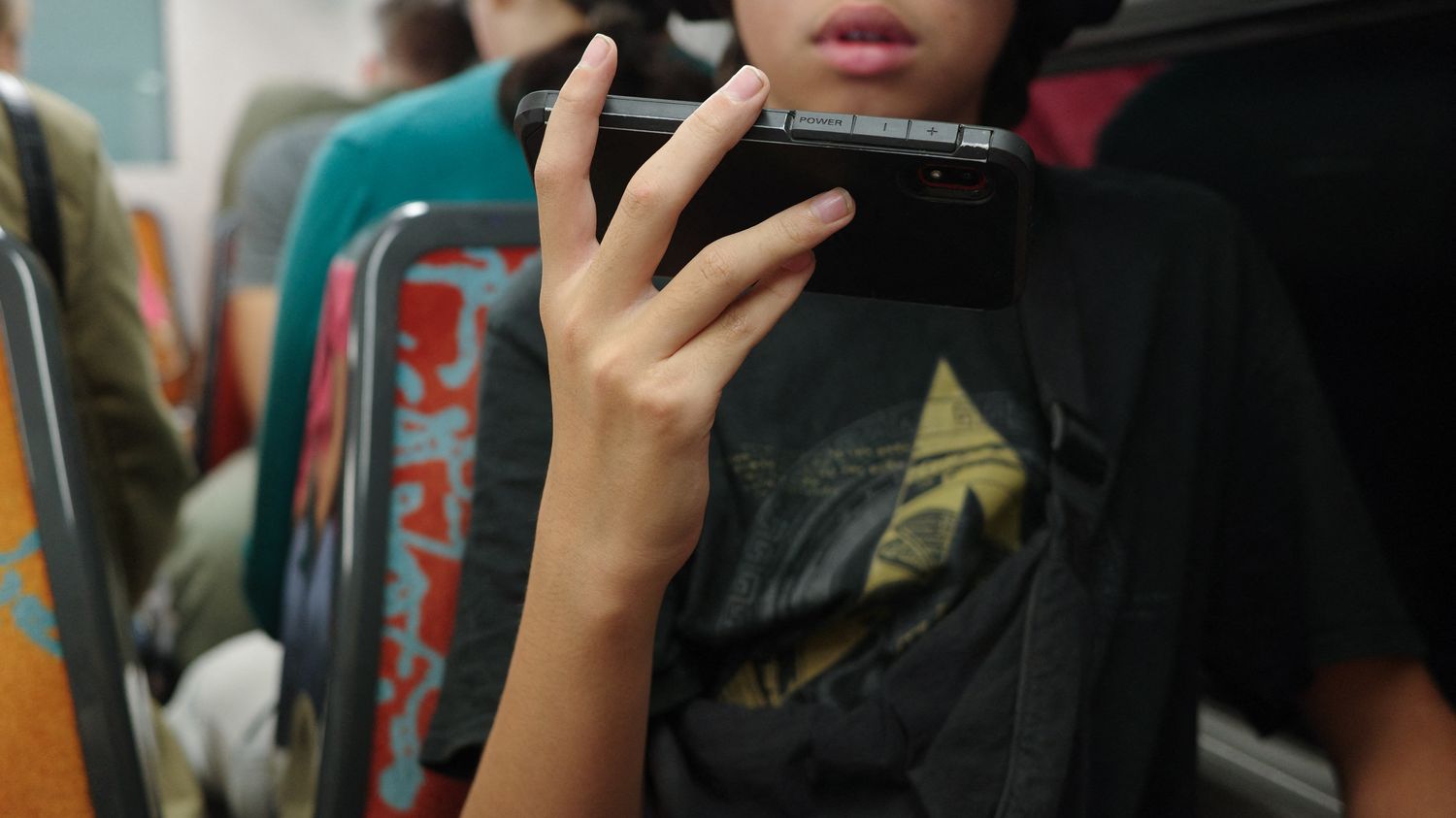A Scottish study shows that over the past year, one in eight children worldwide have been exposed to sexual images, or 302 million young people.
Published
Update
Reading time: 5 min

The report published Monday May 27 by the Childlight Institute, in partnership with the Australian University UNSW of Syndey, warns of the exposure of children and adolescents to so-called pornographic images in a non-consensual manner. This includes taking or sharing images without the young person’s consent or exposing them to sexual content. Franceinfo asked two experts how to approach this subject with young people.
What does the study say?
Over the past year, one in eight children around the world found themselves confronted, in a non-consensual manner, with photos or videos of a sexual nature, according to the study. In Western Europe, nearly 20% of young people have been affected, according to Childlight. Globally, 12.5% of children have encountered unwanted sexual interactions online, such as sexual messages or requests for sexual acts from adults and other young people .
Blackmail with intimate photos, also called “sextortion”, and the use of AI to create deepfakes are also part of these interactions. “It’s a global pandemic that has remained hidden for too long”according to Paul Stanfield, the president of Childlight cited in a press release, who has worked for Interpol and the British Crime Agency, the NCA.
These images concern as much “pornography, intended for adults and which young people can come across”but also “the fact that young people will be spotted by predators who will send them photos of a sexual nature, such as male content for example, sent to little girls or little boys”, reacted on franceinfo Justine Atlan, general director of e-Enfance, an association for the protection of children on the internet. “It’s also young people among themselves who tend to think that you have to send each other sexual content when you’re a teenager and you want to flirt”she recalls.
How can we warn young people about this exposure?
“There are three important axes in my opinion”explains Ludi Demol Defe, doctor in information and communication sciences and specialist in pornographic consumption among young people, contacted by franceinfo. “The first axis is to establish a bond of trust with children and adolescents. You can tell them: ‘If you come across something that shocks you, please talk to me, I won’t blame you no, I won’t scold you'”. According to the researcher at Paris 8 Vincennes Saint-Denis University, in Paris, we must therefore keep in mind that young people do not talk about what they have seen or even the violence suffered at school because of the behavior of adults. “Alarmist speeches can also slow them down in their speech.”
Then, educational support is essential. “When your child starts going online, go with him, accompany him, advises Ludi Demol Defe. This doesn’t mean spying on him but explain it to him the first few times. Tell him that malicious people can ask him things and that if this is the case, he should not hesitate to talk about it, while keeping in mind that we cannot completely prevent young people from talking. to strangers.
“The third axis, in my opinion, is to provide information spaces such as the Onsexpress and Sexysoucis sites so that young people can tackle the subject themselves. We can also advise talking to an aunt or uncle, someone ‘one of the family’ with whom he will have a more open conversation.
“We are arriving at a moment where we need to be a little more refined, nuanced and subtle in our approach to digital technology for children”confirms Justine Atlan, general director of e-Enfance, an association for the protection of children on the internet. “Unfortunately, this forces parents to address the question of what content my child can watch or not, at what age, and it asks us to focus a little on that”, explains the general director of e-Enfance. The latter reminds us that the phenomenon affects “the whole world”and not just industrial countries, with “a very strong rejuvenation, with younger and younger children having access to the internet and social networks”. Gold, “It is indeed abuse to expose a child to this content, psychological abuse which can have very serious consequences”she says.
What legislative framework can be strengthened?
For Justine Atlan, Gafam, the large digital companies, have a responsibility and must act. “We may create offenses within a legislative framework, but we have difficulty enforcing them and we cannot do anything without them. They must be aware of their global responsibility to protect children online.”, she insists. In particular, it calls for a concrete measure: “It is imperative that we find a way to identify children online to make them a separate, vulnerable population, so that we can avoid mixing them with adults.”
Another recommendation from Ludi Demol Defe: the need to apply the tools already available in France. Indeed, “one axis is the application of the Aubry law of 2001 which recommends at least three annual sexuality education sessions”. A text which is not applied enough according to the researcher, while “the advantage of applying the Aubry law is that it does not only include sexual abuse on the internet. It also makes it possible to detect probable cases of incest and sexual violence among young people”. In short, multiply the spaces where speech and pedagogy between parents and children can be applied peacefully.
